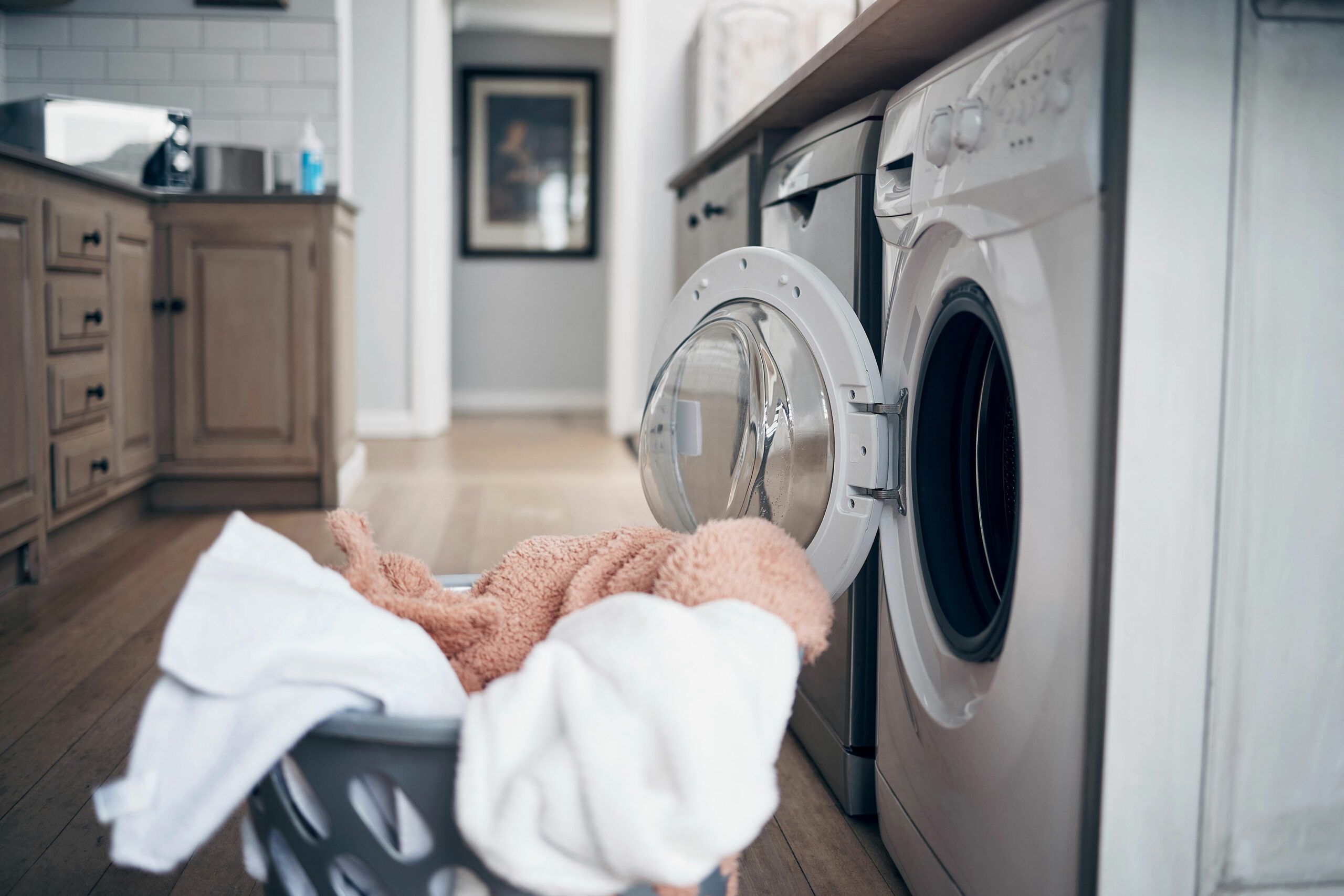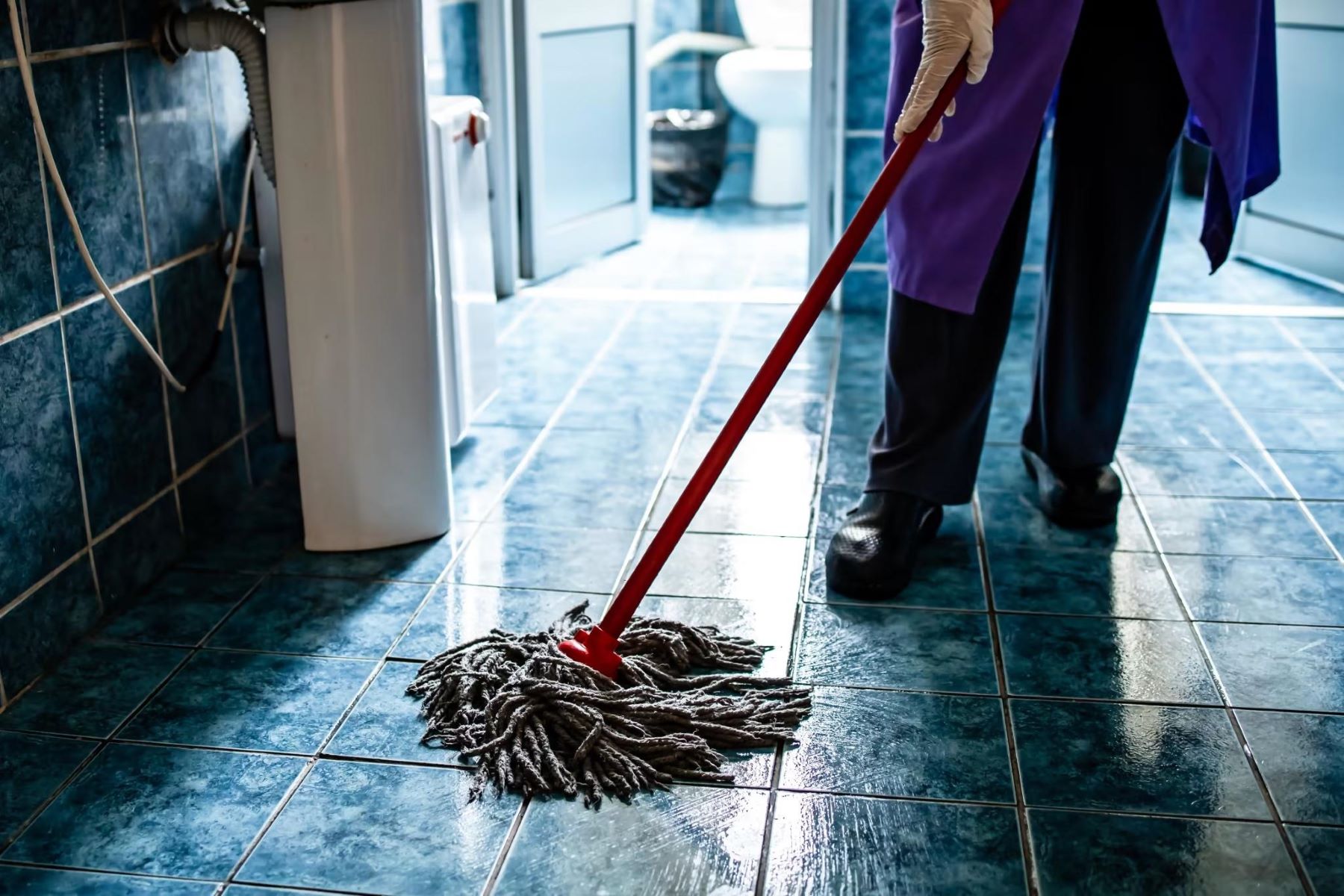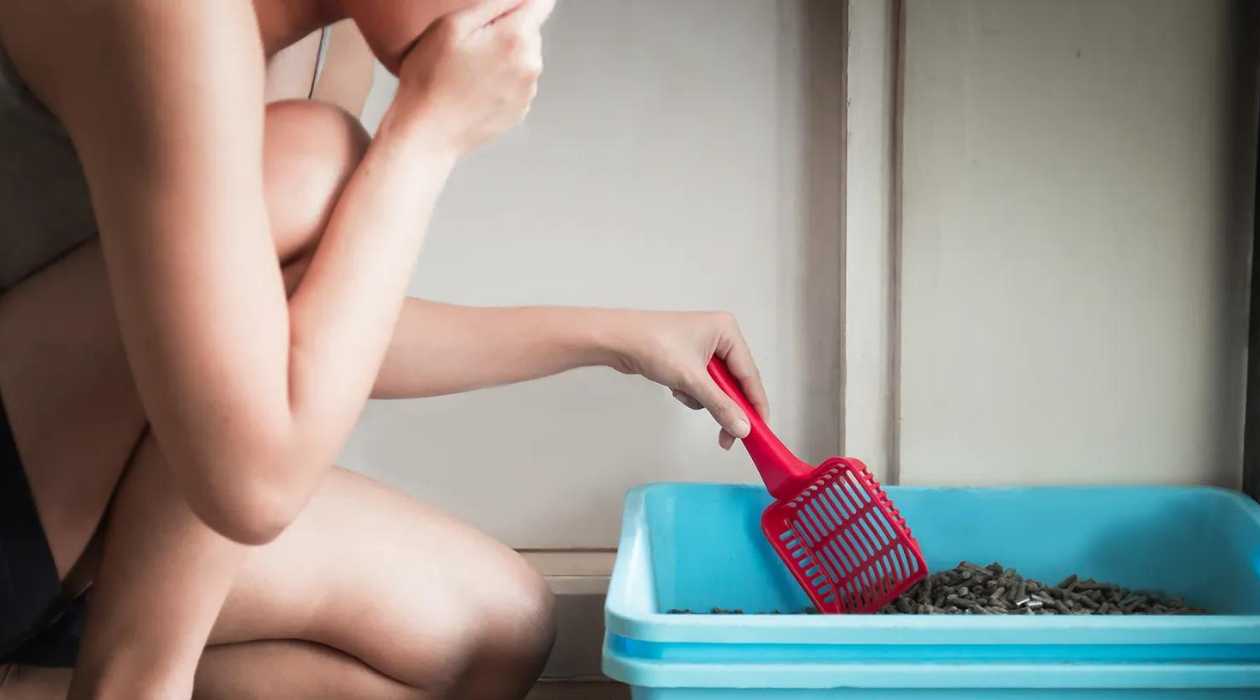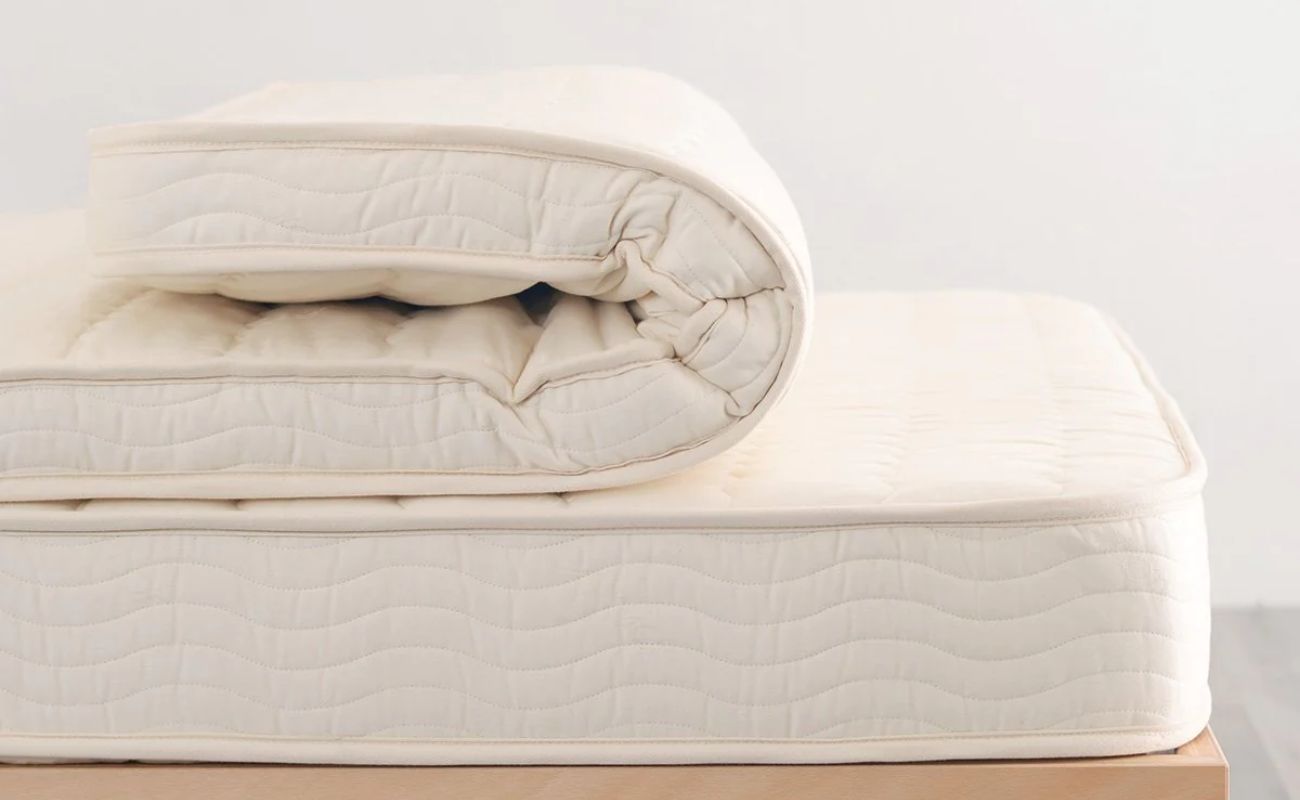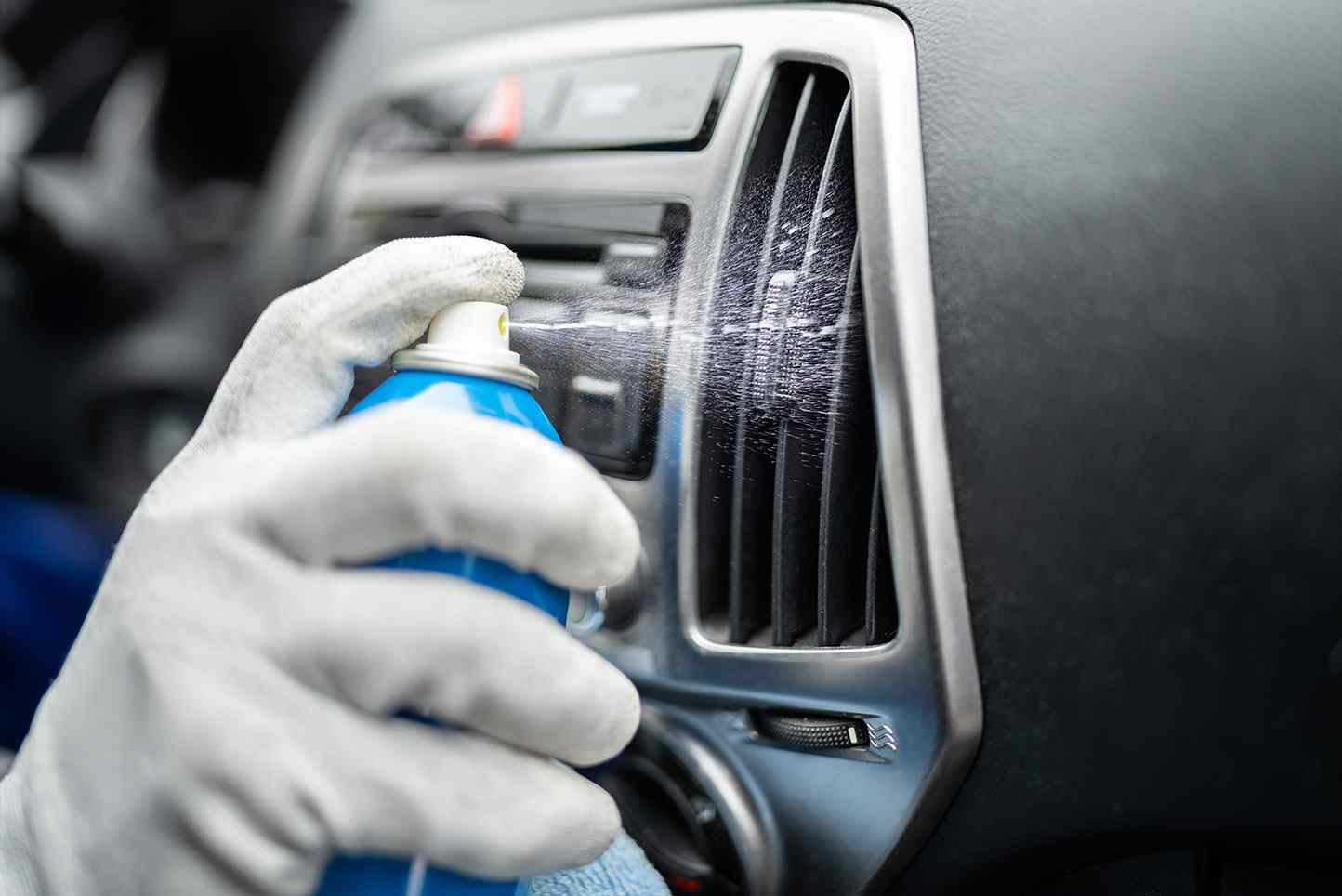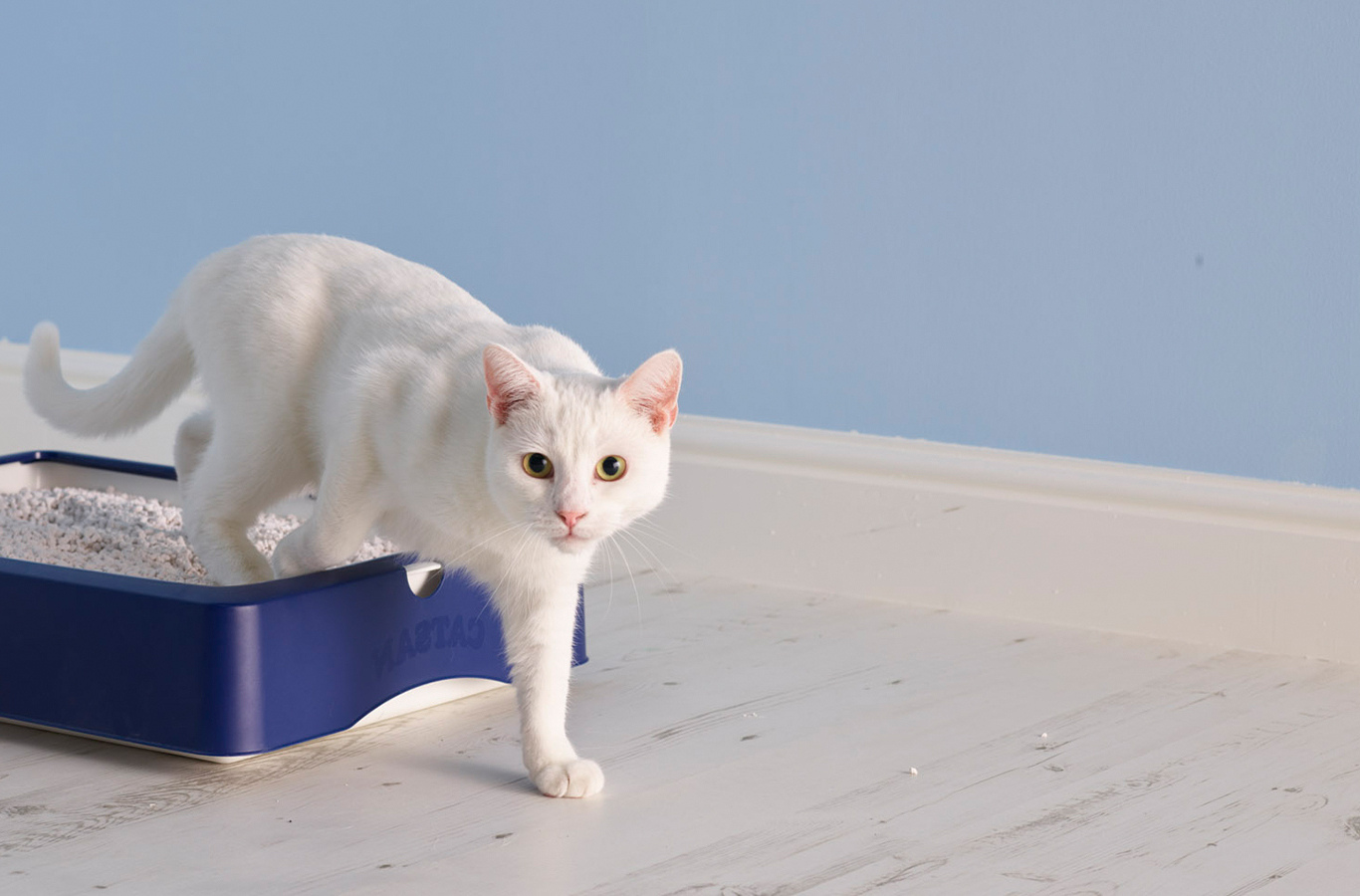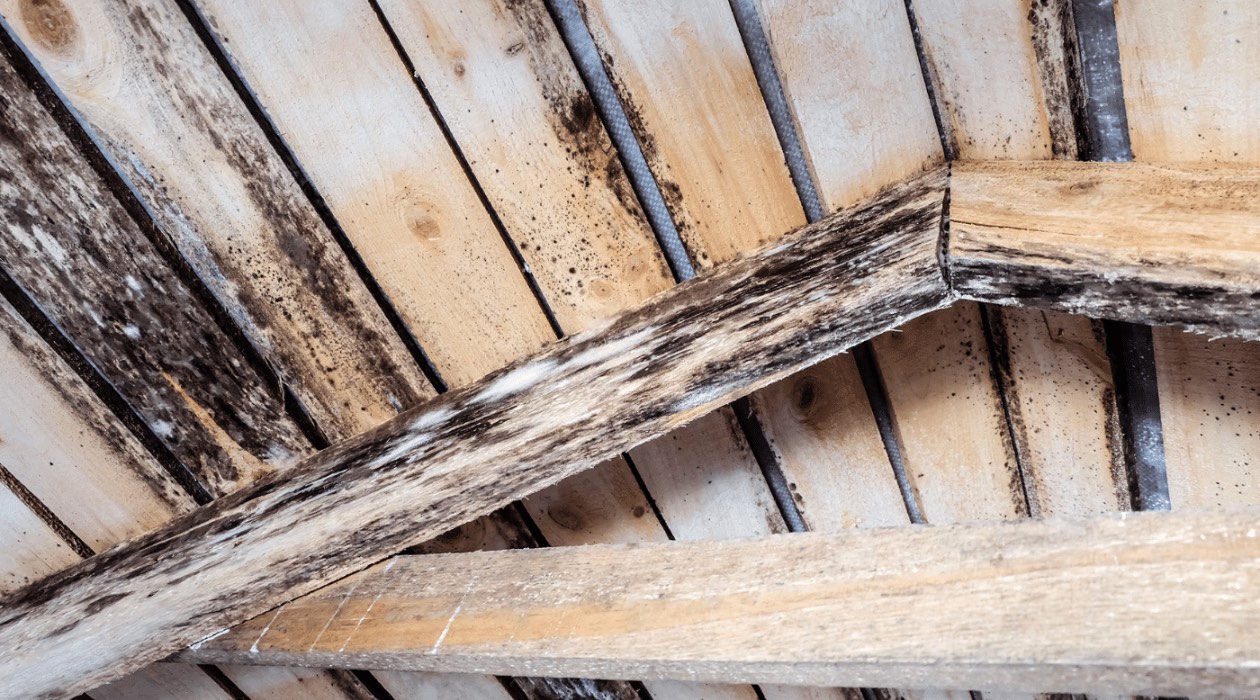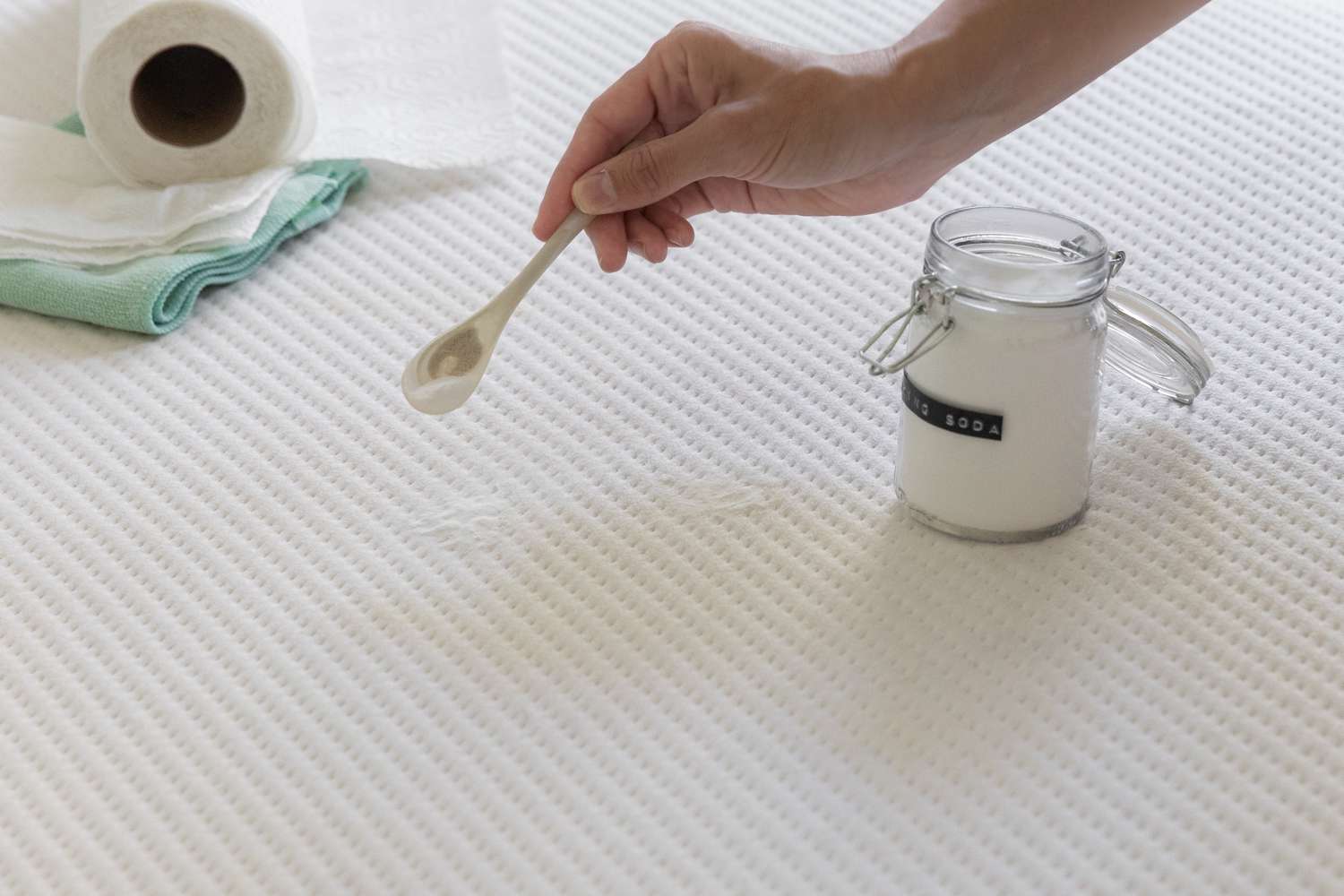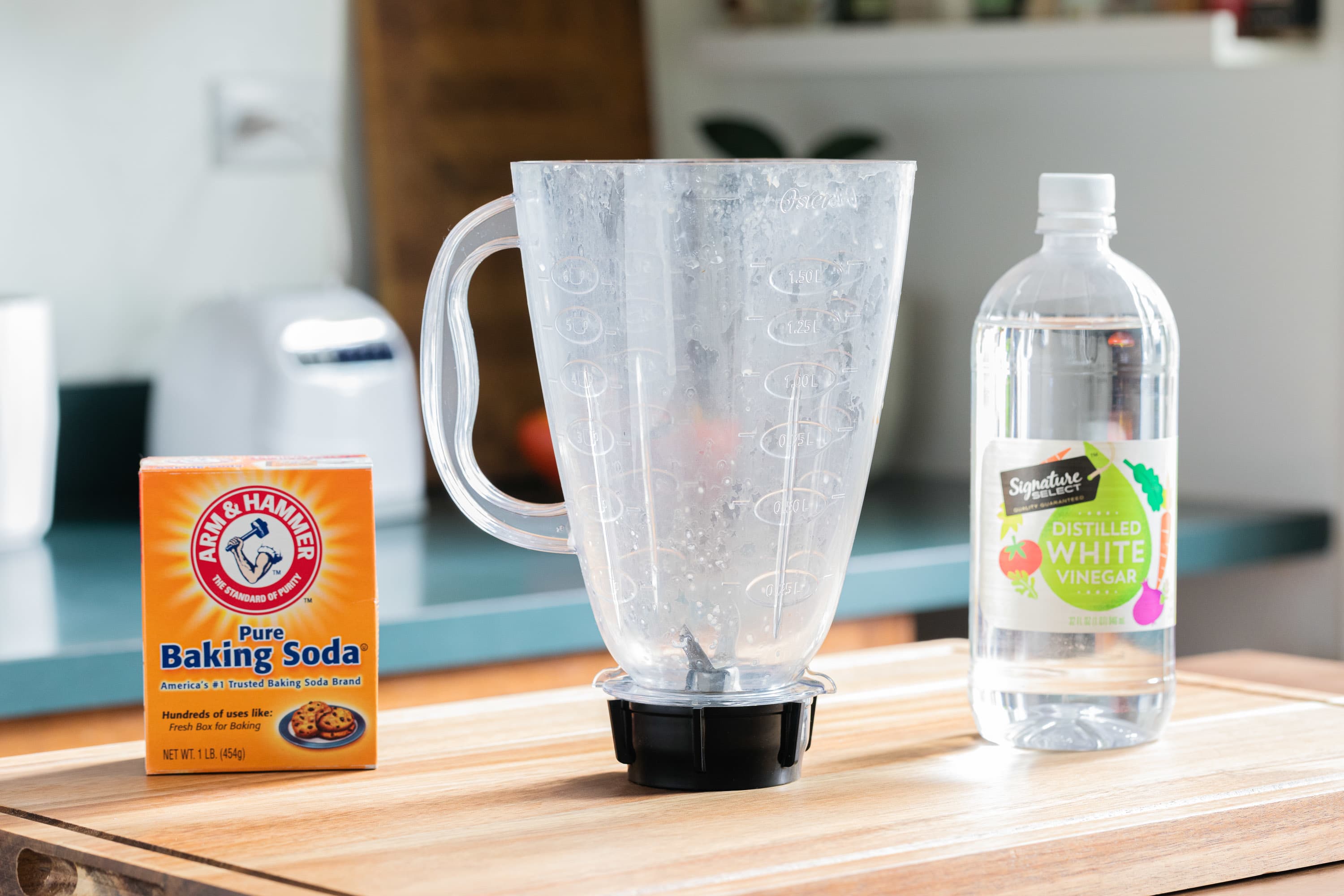Home>Home Maintenance>How To Get Rid Of A Smell From An Air Conditioner
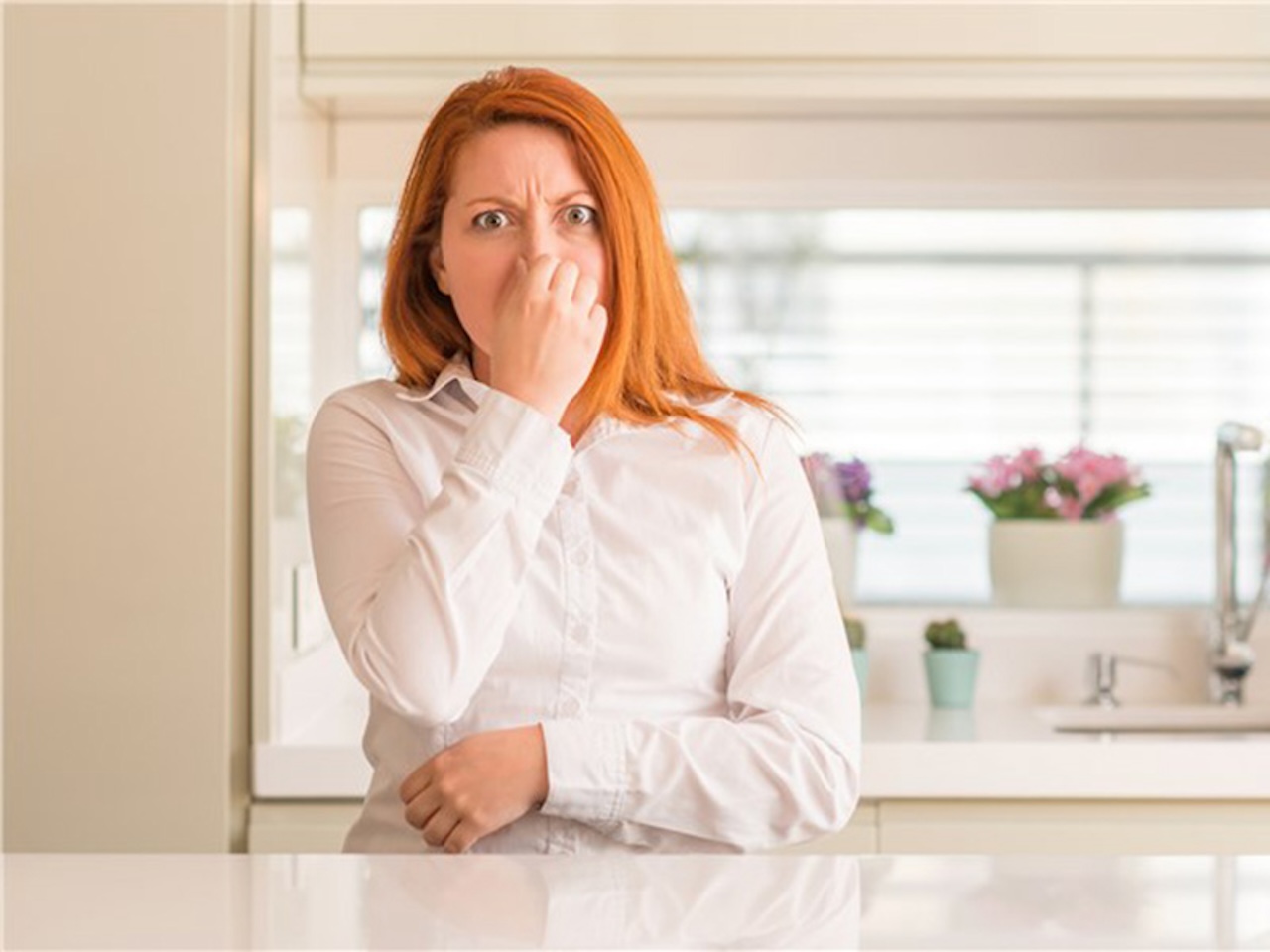

Home Maintenance
How To Get Rid Of A Smell From An Air Conditioner
Modified: March 21, 2024
Learn how to eliminate unpleasant odors coming from your air conditioner with these effective home-maintenance tips. Say goodbye to unwanted smells now!
(Many of the links in this article redirect to a specific reviewed product. Your purchase of these products through affiliate links helps to generate commission for Storables.com, at no extra cost. Learn more)
Introduction
Having a fresh and clean air in your home is essential for a healthy and comfortable living space. However, sometimes your air conditioner can develop a foul smell, which can be quite unpleasant. This odor can be caused by various factors such as mold and mildew growth, stagnant water, or even outside sources. Fortunately, there are steps you can take to get rid of these smells and ensure your air conditioner is odor-free.
In this article, we will explore the common causes of air conditioner smells and provide you with a comprehensive guide on how to clean and eliminate these odors. By following these steps, you can enjoy a fresh and pleasant atmosphere in your home once again.
Key Takeaways:
- Regularly cleaning and maintaining your air conditioner can eliminate unpleasant odors caused by mold, stagnant water, and outside sources, ensuring a fresh and healthy home environment.
- Understanding the causes of air conditioner odors and following a comprehensive cleaning guide can help you enjoy a clean and odor-free air conditioner, contributing to a comfortable living space.
Understanding the cause of the smell
Before we dive into the steps of cleaning your air conditioner, it’s important to understand the potential causes of the unpleasant smell. By identifying the underlying issue, you can effectively tackle the problem and prevent it from recurring in the future.
One common cause of air conditioner odor is the growth of mold and mildew. These microorganisms thrive in moist environments, and the damp and dark interior of an air conditioner provides the perfect breeding ground for them. When you turn on your air conditioner, the circulating air can carry the musty smell of mold and mildew throughout your home.
Another culprit of unpleasant odors is stagnant water. Your air conditioner has drain pans and tubes to collect and remove condensation. Over time, these areas can become clogged or damaged, resulting in the accumulation of water. This stagnant water can produce a foul odor that is then released into your home along with the airflow.
In some cases, the smell may not originate from within your air conditioner, but instead come from external sources. For example, if there is a dead rodent or bird trapped within the ductwork or outside unit, the decomposing odor can infiltrate your living space when the air conditioner is running.
Understanding the cause of the smell is crucial as it will determine the appropriate cleaning and maintenance steps needed to eliminate the odor. Now that we have identified some potential causes, let’s move on to the next section, where we will discuss the steps to clean your air conditioner and get rid of the unpleasant odors.
Steps to clean the air conditioner
When it comes to getting rid of the smell from your air conditioner, a thorough cleaning is essential. Follow these steps to ensure a clean and fresh-smelling unit:
- Turn off the power: Before you begin cleaning your air conditioner, make sure to turn off the power at the main breaker to prevent any accidents or injury.
- Remove dust and debris: Start by removing any visible dirt, dust, or debris from the exterior of your air conditioner. Use a soft brush or vacuum cleaner with a brush attachment to gently clean the vents, fins, and other accessible parts.
- Unplug and remove the unit: If you have a portable or window-mounted air conditioner, unplug the unit and carefully remove it from the window or wall. Place it on a sturdy surface where you can easily access the interior components.
- Check and clean the condenser coils: The condenser coils are responsible for releasing heat from the air conditioner. Over time, they can accumulate dirt and debris, hindering their efficiency and causing unpleasant odors. Use a soft brush or a coil cleaning spray to remove any buildup and ensure proper airflow.
- Clean the drain pans and tubes: Locate the drain pans and tubes in your air conditioner. These components collect and remove condensation that accumulates during operation. Check for any clogs or damage, and clean them thoroughly using a mixture of water and mild detergent. Make sure the water drains freely and there is no stagnant water remaining.
- Inspect and clean the air filters: The air filters in your air conditioner trap dust, pollen, and other particles, preventing them from circulating in your home. Over time, these filters can become dirty and clogged, leading to unpleasant odors and reduced airflow. Remove the filters and clean them according to the manufacturer’s instructions. If they are too damaged or worn out, consider replacing them with new filters.
- Disinfect with a mold and mildew cleaner: If you suspect mold or mildew growth in your air conditioner, it’s important to disinfect the unit to eliminate these microorganisms. Use a mold and mildew cleaner specifically designed for air conditioners, following the instructions on the product label.
- Reassemble and reinstall: Once all the components are clean and dry, reassemble the air conditioner and carefully reinstall it in the window or wall. Make sure all connections are secure and that the unit is properly sealed to prevent any air leaks.
- Turn on the power and test: Finally, turn on the power and test your air conditioner to ensure it is functioning properly and there are no lingering odors. If necessary, allow the unit to run for a while to circulate fresh air and remove any residual smells.
By following these cleaning steps regularly, you can maintain a fresh and odor-free air conditioner that will enhance the air quality in your home.
Removing mold and mildew
Mold and mildew are common culprits of unpleasant odors in air conditioners. To effectively eliminate these microorganisms and prevent them from causing further issues, follow these steps:
- Put on protective gear: Before you start cleaning mold and mildew, protect yourself by wearing gloves, safety goggles, and a mask to avoid contact with potentially harmful spores.
- Mix a cleaning solution: Prepare a solution of equal parts water and vinegar or water and bleach. Both vinegar and bleach have antifungal properties that can help kill mold and mildew.
- Turn off the power: As a safety precaution, turn off the power to your air conditioner at the main breaker.
- Remove covers and panels: Access the internal components of your air conditioner by removing the covers and panels. Consult your user manual for specific instructions on how to do this.
- Clean affected areas: Using a soft brush or cloth soaked in the cleaning solution, gently scrub any visible mold or mildew growth. Pay close attention to areas such as the condenser coils, drain pans, and tubes where moisture accumulates.
- Rinse with clean water: After cleaning, rinse all the affected surfaces with clean water to remove any residue from the cleaning solution.
- Dry thoroughly: Allow the cleaned components to dry completely before reassembling and reinstalling them. Moisture promotes the growth of mold and mildew, so it’s crucial to ensure everything is thoroughly dry.
- Inspect for hidden mold: While cleaning, be aware of any hidden mold or mildew in areas that are not easily visible. These can include the blower compartment, ductwork, or behind insulation. If you suspect hidden mold, it’s best to consult a professional for proper remediation.
- Consider using a mold inhibitor: To prevent future mold and mildew growth, you may want to use a mold inhibitor specifically designed for air conditioners. Follow the manufacturer’s instructions for application.
- Regular maintenance: To prevent mold and mildew from returning, make sure to perform regular maintenance on your air conditioner, including cleaning, replacing filters, and keeping the unit dry.
By following these steps and taking proactive measures, you can effectively remove mold and mildew from your air conditioner and keep it free from unpleasant odors caused by these microorganisms.
Eliminating stagnant water
Stagnant water is another common cause of unpleasant odors in air conditioners. If you notice a foul smell coming from your unit, it’s important to address any stagnant water issues. Here are the steps to eliminate stagnant water:
- Turn off the power: Before you begin, make sure to turn off the power to your air conditioner at the main breaker.
- Locate the drain pans and tubes: Find the drain pans and tubes in your air conditioner. The drain pans collect and remove condensation that forms during the cooling process, while the tubes route the water away from the unit.
- Inspect for clogs or damage: Inspect the drain pans and tubes for any clogs or damage that may be causing water to accumulate. Clear any debris or obstructions that may be blocking the drainage path.
- Clean the drain pans and tubes: Use a mixture of warm water and mild detergent to thoroughly clean the drain pans and tubes. Scrub them with a soft brush to remove any residue or build-up. Rinse them with clean water to ensure all detergent is removed.
- Check for proper water drainage: After cleaning, ensure that water is flowing freely through the drain pans and tubes. Trapped water can lead to unpleasant odors and even mold growth.
- Repair or replace damaged parts: If you find any significant damage to the drain pans or tubes, it’s essential to repair or replace them. Damaged components can result in water leakage and further odor problems.
- Prevent water accumulation: To prevent stagnant water from recurring, it’s crucial to address any underlying issues. Ensure that the drain pans and tubes are properly installed and functioning. Additionally, consider installing a condensate pump to help remove excess water.
- Regular maintenance: To maintain proper drainage and prevent the accumulation of stagnant water, perform regular maintenance on your air conditioner. This includes cleaning the drain pans and tubes regularly and checking for any signs of water leakage or damage.
By following these steps and addressing stagnant water issues in your air conditioner, you can effectively eliminate the unpleasant odors associated with standing water and ensure a clean and fresh-smelling unit.
To get rid of a smell from an air conditioner, try cleaning or replacing the air filter, cleaning the evaporator coil, and using a specialized cleaner to eliminate any mold or mildew buildup.
Cleaning or replacing filters
Dirty or clogged air filters can not only reduce the efficiency of your air conditioner but also contribute to unpleasant odors in your home. To maintain clean and fresh air, it’s important to regularly clean or replace your air filters. Here’s how:
- Turn off the power: Before you begin, make sure to turn off the power to your air conditioner at the main breaker.
- Locate the air filters: The air filters are typically located behind a cover or panel in the front or side of your air conditioner. Consult your user manual for specific instructions on accessing the filters.
- Remove the filters: Once you have located the filters, carefully remove them from the unit. Pay attention to how they are positioned so that you can replace them correctly later.
- Assess the condition: Examine the filters to determine if they are dirty, clogged, or damaged. If they appear heavily soiled or damaged beyond repair, it is advisable to replace them.
- Clean reusable filters: If your filters are reusable, gently clean them with a vacuum cleaner or wash them with mild soap and warm water. Make sure to remove all debris and dirt from the filters, rinse them thoroughly, and allow them to dry completely before reinstallation.
- Replace disposable filters: If you have disposable filters, throw away the old ones and replace them with new filters of the same size and type. This ensures optimal air filtration and helps to eliminate odors caused by trapped particles in the filters.
- Reinstall the filters: After cleaning or replacing the filters, carefully reinsert them into the appropriate slots, aligning them correctly with the arrows or markings for proper airflow direction.
- Turn on the power and test: Finally, turn on the power and test your air conditioner to ensure it is working properly. Properly cleaned or replaced filters will improve air quality and help eliminate any lingering odors.
- Regular maintenance: To maintain clean and odor-free air, it’s important to establish a regular maintenance schedule for your air conditioner. Clean reusable filters every few months, and replace disposable filters according to the manufacturer’s recommendations.
By regularly cleaning or replacing your air filters, you can ensure optimal performance of your air conditioner and improve the air quality in your home, effectively eliminating any unpleasant odors caused by trapped particles.
Cleaning the evaporator coil
The evaporator coil is a crucial component of your air conditioner that helps cool and dehumidify the air. Over time, the coil can become dirty and accumulate dust, dirt, and other debris. This buildup not only affects the efficiency of your air conditioner but can also lead to unpleasant odors. Here’s how to clean the evaporator coil:
- Turn off the power: Before you start cleaning the evaporator coil, ensure that the power to your air conditioner is turned off at the main breaker. Safety should be your top priority.
- Locate the coil: The evaporator coil is typically located inside the indoor unit of your air conditioner. Refer to your user manual or seek professional guidance to locate and access the coil.
- Protect the surrounding area: Place towels or a plastic sheet beneath the indoor unit to catch any water and debris that may fall during the cleaning process.
- Clean the coil fins: Use a soft brush or a fin comb specifically designed for air conditioner coils to carefully remove any visible dust and debris from the coil fins. Gently brush or comb in a straight motion, being cautious not to bend or damage the fins.
- Apply a cleaning solution: Prepare a mixture of equal parts water and mild detergent or a commercial coil cleaner. Using a spray bottle, mist the cleaning solution onto the coils, ensuring thorough coverage.
- Allow the solution to sit: Let the cleaning solution sit on the evaporator coil for a few minutes to loosen stubborn dirt and grime.
- Rinse with water: After the solution has had time to work, rinse the evaporator coil thoroughly with clean water. Avoid directly spraying water onto any electrical components.
- Dry the coil: Allow the coil to air dry completely before reassembling and turning the power back on. This ensures that no moisture remains, which can contribute to mold growth and subsequent odor issues.
- Reassemble and turn on the power: Once the coil is fully dry, reassemble any components that were removed and turn on the power to your air conditioner. Test the unit to ensure that it is functioning properly and that there are no lingering odors.
- Maintain regular cleaning: To prevent the evaporator coil from becoming dirty again and causing odors, incorporate regular maintenance into your air conditioner care routine. Clean the coil at least once a year or as recommended by the manufacturer.
Cleaning the evaporator coil is an essential step in maintaining the efficiency and odor-free operation of your air conditioner. By following these steps and incorporating regular cleaning into your maintenance routine, you can enjoy clean and fresh air in your home.
Dealing with foul odors from outside sources
While most air conditioner odors are caused by internal factors, there are instances when foul smells can originate from outside sources. These external odors can infiltrate your home when the air conditioner is running, diminishing the overall indoor air quality. Here’s how to address foul odors from outside sources:
- Identify the source: Determine the specific outside source that may be causing the unpleasant odor. It could be nearby industrial plants, construction sites, sewage systems, or even nearby vegetation.
- Improve ventilation: Increase the amount of fresh air ventilation in your home by opening windows and using fans. This helps to dilute and disperse any outside odors that may enter your living space through the air conditioner.
- Check for air leaks: Inspect your air conditioner for any air leaks or gaps in the ductwork. Sealing these leaks will prevent the entry of outdoor odors. Use duct sealant or professional assistance to properly seal any air leaks.
- Install an air purifier: Consider installing an air purifier with a carbon or activated charcoal filter. These filters are effective in neutralizing and removing odors from the air, including those from outside sources.
- Use air fresheners: Place air fresheners strategically around your home to mask any lingering outside odors. Opt for natural or odor-neutralizing air fresheners rather than synthetic ones that may exacerbate air quality issues.
- Consult with professionals: If the outside odor problem persists and significantly affects your comfort and health, it may be necessary to consult professionals such as HVAC technicians or indoor air quality experts. They can assess the situation and provide tailored solutions, such as advanced air filtration systems or HVAC modifications.
- Maintain regular cleaning and maintenance: Regularly clean and maintain your air conditioner to minimize potential odor issues from outside sources. This includes cleaning filters, removing debris around the outdoor unit, and addressing any drainage or functionality issues.
- Consider landscaping changes: If the odor is coming from nearby vegetation, consider making landscaping changes to minimize its impact. This could involve removing or relocating plants that produce strong scents or selecting alternative landscaping options that are less likely to contribute to unwanted odors.
- Communication with neighbors and authorities: If the outside odors are caused by local sources, such as waste management facilities or industrial plants, it may be helpful to communicate your concerns with the relevant authorities or your neighbors. They may be able to address the issue or provide guidance on dealing with the odors.
While it may be challenging to completely eliminate outside odors, following these steps can help mitigate their impact and improve the air quality inside your home.
Preventive maintenance tips
Regular preventive maintenance is key to keeping your air conditioner running efficiently and minimizing the risk of odors. By following these tips, you can ensure that your unit remains in optimal condition:
- Keep the area around the outdoor unit clean: Regularly remove any debris, leaves, or vegetation that may accumulate around the outdoor unit. This helps to maintain proper airflow and prevent the introduction of outdoor odors into the system.
- Change or clean air filters: Follow the manufacturer’s recommendations and replace or clean air filters regularly. Clogged or dirty filters restrict airflow and can contribute to the development of odors. Clean reusable filters every few months or replace disposable filters as needed.
- Inspect and clean the condenser coils: Check the condition of the condenser coils regularly and clean them if necessary. Dirty coils can impede airflow and reduce the efficiency of your air conditioner, leading to potential odor issues.
- Maintain proper drainage: Ensure that the drain pans and tubes are free from clogs or damage. Regularly clean and inspect these components to prevent stagnant water and foul odors.
- Schedule professional maintenance: Consider scheduling regular professional maintenance for your air conditioner. A trained technician can perform a thorough inspection, clean the internal components, and identify any potential issues before they become major problems.
- Monitor humidity levels: High humidity can contribute to mold and mildew growth in your air conditioner, leading to unpleasant odors. Use a dehumidifier if necessary to maintain a comfortable and optimal humidity level in your home.
- Regularly clean and inspect ductwork: If you have a ducted system, periodically clean and inspect the ductwork for any signs of mold, dust, or debris. Professional duct cleaning may be necessary if there are significant issues or if you have not had it cleaned in a long time.
- Use proper ventilation: Ensure that your home has proper ventilation to reduce the chance of odors lingering in the indoor air. Open windows or use exhaust fans when cooking, bathing, or performing activities that produce strong odors.
- Monitor for unusual smells or signs of mold: Regularly check for any unusual smells coming from your air conditioner. If you detect a persistent or strong odor, or if you notice signs of mold or mildew growth, address the issue promptly to prevent further problems.
- Follow manufacturer’s instructions: Always refer to the manufacturer’s guidelines and recommendations for maintenance and care of your specific air conditioner model. This ensures that you are following the appropriate procedures and optimizing the lifespan of your unit.
By implementing these preventive maintenance tips, you can maintain a clean and odor-free air conditioner, ensuring a comfortable and healthy living environment.
Read more: How To Get Rid Of An Air Conditioner Cough
Conclusion
A fresh and clean air conditioner not only helps you stay comfortable but also contributes to a healthier and more enjoyable living environment. By understanding the causes of unpleasant odors and following the steps outlined in this article, you can effectively clean your air conditioner and eliminate these odors.
Whether it’s removing mold and mildew, addressing stagnant water issues, cleaning filters and evaporator coils, or dealing with outside odors, each step plays a vital role in maintaining the optimal performance of your air conditioner and ensuring a fresh-smelling home.
Preventive maintenance is crucial in preventing odors from occurring in the first place. By regularly cleaning and inspecting your unit, as well as maintaining proper airflow and humidity levels, you can minimize the risk of unpleasant smells and extend the lifespan of your air conditioner.
Remember to follow the manufacturer’s instructions and consult professionals if needed. They can provide expert guidance and assistance in resolving any complex issues that may arise.
With these tips in mind, you can enjoy clean and odor-free air throughout your home, creating a comfortable and inviting space for you and your loved ones.
Frequently Asked Questions about How To Get Rid Of A Smell From An Air Conditioner
Was this page helpful?
At Storables.com, we guarantee accurate and reliable information. Our content, validated by Expert Board Contributors, is crafted following stringent Editorial Policies. We're committed to providing you with well-researched, expert-backed insights for all your informational needs.
